List of Vitamins and their FunctionsVitamins are the organic compounds that are necessary for human beings as they carry out numerous activities that foster a healthy life. It serves as a vital nutrient for most lifeforms for the active running of their metabolism. Vitamins are the micronutrients that people need in little quantities. Human derives vitamins from the food they consume as the body doesn't produce vitamins on its own. Several health problems can be prevented by the proper intake of vitamins. The body may develop a deficiency if it lacks any of the vitamins. The need for vitamins differs in all living creatures. Like, Dogs can produce the vitamin C they require, whereas humans obtain it from their diet. EtymologyThe biochemist from Poland Casimir Funk, who worked at the Lister Institute of Preventive Medicine, introduced the word "vitamine" in 1912. Later the term "vitamin" was obtained from the compound word "vitamine". The term vitamin was created from vital and amine, as it was observed that these organic micronutrients prevent beriberi and possibly can prevent other diseases caused by dietary insufficiency. Consequently, "vital" because these are essential for life and "amine " for chemical amines. This was true in the case of thiamine only, and further studies even revealed that vitamin C and other such micronutrients weren't amines which means that the term Vitamine was not holding its true sense in such cases, and therefore, the term was shortened to vitamin in English. Main Functions of VitaminsVitamins are included as essential nutrient as it carries out hundreds of tasks in the human body. Following are the major roles of vitamins in the body that promotes healthy living:
Vitamins are grouped into two: Fat-soluble vitamins and Water-soluble vitamins, based on their characteristics and solubility in fat or water. 1. Fat-soluble vitamins - Fat-soluble vitamins absorb along with the other fats present in the diet we take. They are stored in the body's liver and other fatty tissues. It can stay in one's body for a while. Once it gets stored in the body, it can be stored for upto 6 months in the body until the body needs them. Most vitamins out of total number of Vitamins, including Vitamin A, K, E, and D, fall under the category of fat-soluble vitamins. Each of them has its specific functions and can be derived from a range of food. 2. Water-soluble vitamins - Unlike fat-soluble vitamins, water-soluble vitamins don't get stored in the body for a very long period, and therefore, intake of such types of vitamins becomes even more important. It enters the bloodstream, and anything that is not needed by the body is excreted through urine. As water-soluble vitamins are not stored for the long term, they need to be restored repeatedly. The essential water-soluble vitamins are vitamin C and a number of B vitamins that includes:
A total of 13 vitamins are recognized, and all of these are described below: 1. Vitamin A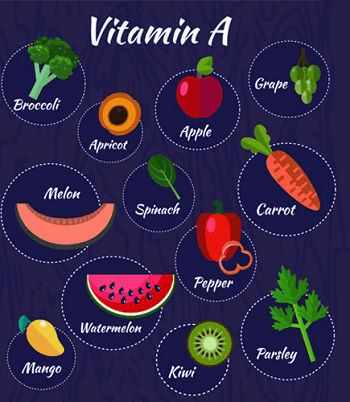
Retinol, retinal as well as carotenoid, is the most popular chemical name of Vitamin A (as it represents the chemical structure of this vitamin). From Childhood or schooling days, it is always taught that vitamin A is necessary for health and proper functioning of the eyes, and it is a fat-soluble vitamin. An individual may suffer from certain eye infections and eye diseases if they lack vitamin A in their diet. Following are some major food elements that are considered rich sources of vitamin A:
2. Vitamin B1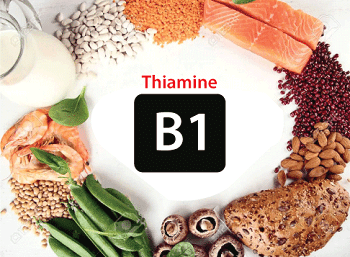
Thiamine is the chemical name of Vitamin B1, and this chemical name is also used to represent the chemical structure of this vitamin. Vitamin B1 is a water-soluble vitamin, and its key function is to produce several enzymes that convert carbohydrates into energy. Vitamin B1 is found in plenty of foods, such as:
3. Vitamin B2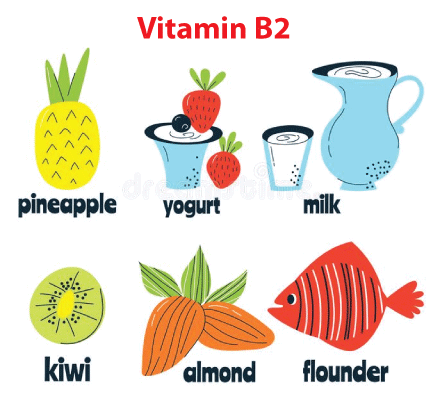
Riboflavin, which is used to represent the chemical structure of Vitamin B2, is also the chemical name of this vitamin. It is a water-soluble vitamin. The correct amount of riboflavin in the diet promotes the proper growth of body cells and also aids in the metabolism of food. If there is no proper amount of vitamin B2 in our body, signs can be visible in the lips and mouth, such as swollen and cracked lips, skin disorders, sores at the corner of the mouth, hair loss, and many more. Following are some major food elements that are considered rich sources of vitamin B2:
4. Vitamin B3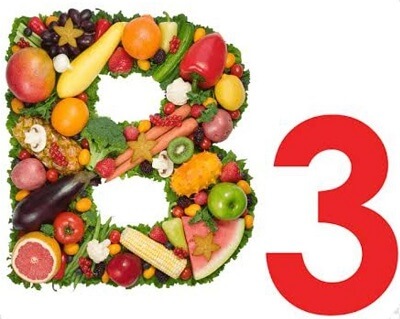
Niacin is the chemical name of Vitamin B3, and this chemical name is also used to represent the chemical structure of this vitamin. Vitamin B3 is one of the water-soluble vitamins, and its key function is to help in cell growth. Niacin is needed by the cells to work smoothly. If the body becomes vitamin B3 deficient, a person may experience intestinal problems, skin diseases, and Diarrhea. Vitamin B3 is found in abundance in food such as:
5. Vitamin B5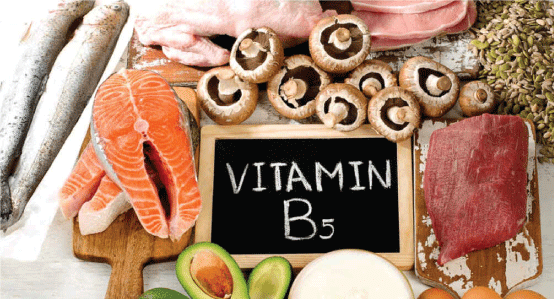
Pantothenic acid, which is used to represent the chemical structure of Vitamin B5, is also the chemical name of this vitamin. Vitamin B5 is a water-soluble vitamin, and consuming this vitamin is very necessary as it helps in the manufacturing of blood cells, and producing sex and stress-related hormones produced in the adrenal gland. Food materials rich in vitamin B5 includes:
6. Vitamin B6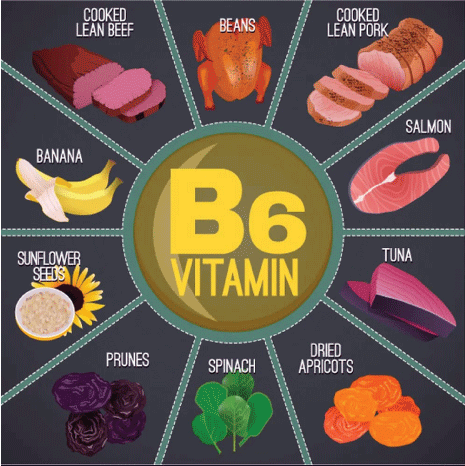
Pyridoxine is the chemical name of Vitamin B6, and this chemical name is also used to represent the chemical structure of this vitamin. It is important in the body for the formation of blood cells, and deficiency of this vitamin may lead to certain medical conditions like peripheral neuropathy or anemia. Following are some major food elements that are considered rich sources of vitamin B6:
7. Vitamin B7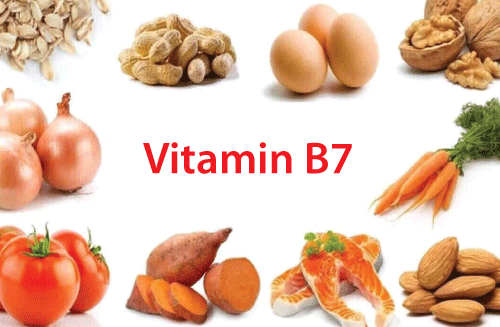
Vitamin B7 is commonly known as Biotin, which is also the chemical name of this vitamin. Carbohydrates, fats, and proteins are metabolized with the help of biotin, and this vitamin is also recommended for strengthening hair and nails. This is the major reason why biotin is a common component in cosmetic products for skin and hair. An inadequate level of biotin in the body can cause dermatitis, hair loss, brittle nails, and the intestine to inflate. Some of the food rich in vitamin B7 are:
8. Vitamin B9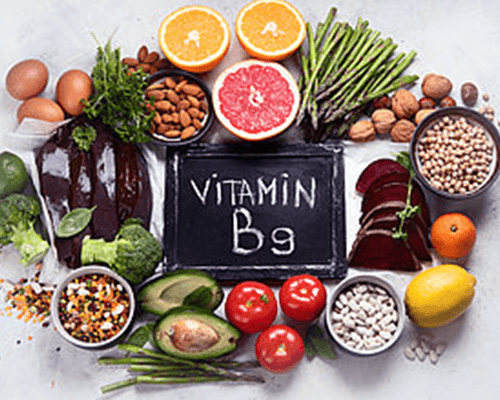
Folic acid, which is used to represent the chemical structure of Vitamin B9, is also the chemical name of this vitamin. Vitamin B9 is one of the water-soluble vitamins, and this vitamin actively participates in the synthesis of DNA and RNA. During pregnancy, women must take an adequate amount of vitamin B9 as its deficiency can affect the nervous system of the fetus. Some of the food rich in vitamin B9 includes:
9. Vitamin B12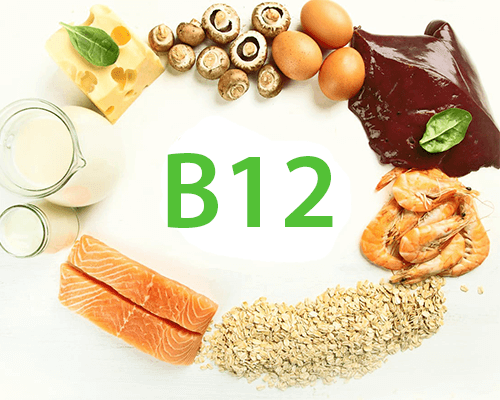
The chemical name of Vitamin B12 is methylcobalamin, and this is also one of the common water-soluble vitamins. Vitamin B12 promotes and maintains the health of the nervous system, and deficiency of this vitamin results in various neurological problems. Food that is rich in vitamin B12 includes:
10. Vitamin C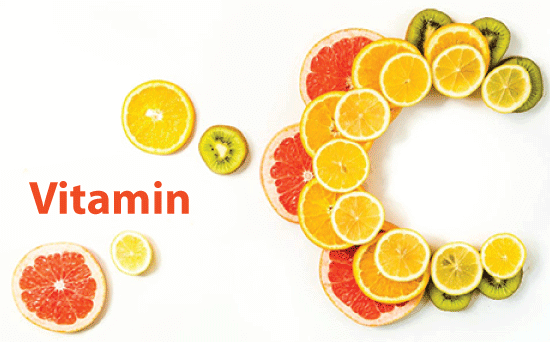
The chemical name of Vitamin C is ascorbic acid which also represents the chemical structure of this vitamin. It is a water-soluble vitamin. Vitamin C contributes to improving the overall health of a person. It helps in producing collagen and supports the blood vessels. Vitamin C boosts the immune system, provides antioxidants, and it also helps in the wound healing process. If Vitamin C is lower than the required value in the body, a person's body may take longer to heal wounds, and deficiency of this vitamin also results in poor tissue growth. Vitamin C is found in abundance in food such as:
11. Vitamin D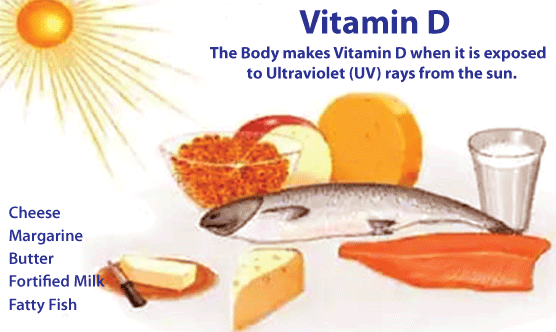
Vitamin D is popularly called ergocalciferol, and this is also the chemical name of this vitamin. Vitamin D is a fat-soluble vitamin, and its key role is to help in the mineralization of the bones. If the body becomes Vitamin D deficient, it may lead to bone-related problems such as rickets in children and osteomalacia in adults. UVB rays of the sun are the natural source of vitamin D. Food that provides vitamin D are:
12. Vitamin E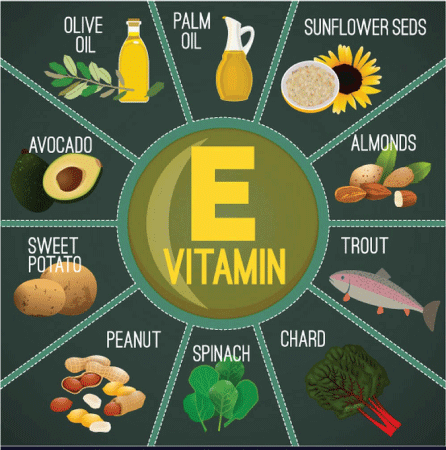
Tocopherol is the chemical name of Vitamin E, which also represents the chemical structure of this vitamin. Vitamin E is a fat-soluble vitamin, and this vitamin is very useful in preventing oxidative stress and inflammation. Generally, Vitamin E deficiency is not commonly seen, but if a person is a Vitamin E deficit, the blood cells in their body tend to be destroyed. Food that boosts the vitamin E in the body are:
13. Vitamin K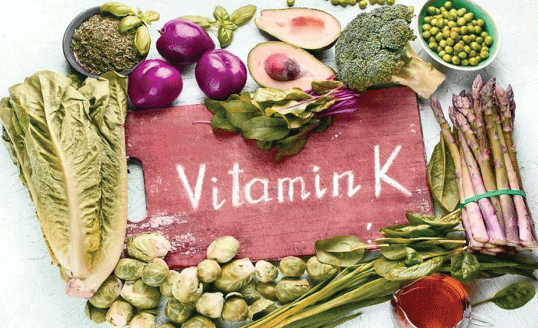
Phylloquinone, which is used to represent the chemical structure of Vitamin K, is also the chemical name of this vitamin. It is a fat-soluble vitamin. Vitamin K is important for the blood to clot, and deficiency of this vitamin may lead to excessive bleeding (haemorrhage) & bleeding diathesis and also increase the risk of cardiovascular disease. Following are some major food elements that are considered rich sources of vitamin K:
Another Major Source of Vitamins: Vitamin supplements are some other sources of vitamins, and medical professionals suggest to take these supplements if needed. ConclusionVitamins are very crucial for well-being and the prevention of diseases. But intake of more vitamins doesn't improve one's health substantially. Excessive intake of vitamins leads to overdose and has adverse effects on our health. It's better to consult a physician to examine our health status and consume supplements as per their instructions. It is essential for an individual to adopt a healthy way of living and a balanced diet for their overall well-being.
Next TopicList of Railway Ministers of India
|
 For Videos Join Our Youtube Channel: Join Now
For Videos Join Our Youtube Channel: Join Now
Feedback
- Send your Feedback to [email protected]
Help Others, Please Share










